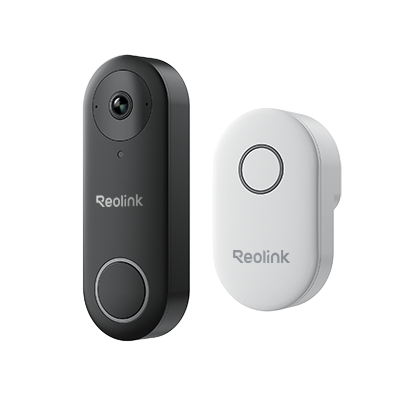Classroom Doorbell: Enhance Classroom Management with Technology

A classroom doorbell is a technology innovation that allows teachers to manage their classrooms in a more effective manner. Simply ringing the bell can get the students' attention, signal when to change activities, and call for participation.
In this article, we will examine how classroom doorbells function, their advantages, the different kinds of them, how they are installed, and pro tips on effectively using these helpful devices.
What is a Classroom Doorbell?
Classroom doorbells are a way for teachers to indicate the need for students' attention nonverbally. They include a button or switch that, when pressed, activates a bell, chime, or other alert sound. Teachers install these near their desks so that they can easily ring the bell during teaching as and when needed. Modern digital doorbells have customizable sounds, volumes, and buttons that light up.
Doorbells help teachers give instructions quickly without raising their voices above the noise in class. Moving from one activity to another, quiet time, preparing for departure –anytime they want attention, all these details are summed up by sending a simple ring. Consequently, this saves teachers' voices and becomes an effective routine.
Why Need a Doorbell for Classroom?
There are several key reasons classroom doorbells support better teaching and learning:
- Classroom Management - The bell sound immediately focuses student attention on the teacher. This prevents the teacher from having to loudly get the class' attention repeatedly. It's less disruptive than verbal cues.
- Student Interaction and Participation - Teachers can use the doorbell to cold call on students to encourage participation. The student rings the bell when they have something to contribute. This provides shy students with a simple way to engage.
- Time Management - A quick bell ring indicates moving from one activity to another. This seamlessly transitions students and prevents time wasted getting ready. The bell keeps the class on track.
Types of Classroom Doorbells
There are a few main types of doorbells designed for classroom use.
Wireless Doorbell for Classroom
Wireless classroom door bells provide flexibility without installing wiring. A battery-powered transmitter sends signals to a remote receiver plugged into an electrical outlet. Teachers can carry the remote trigger around the room, connected to the wireless doorbell classroom. These wireless classroom doorbells have a range of 100-400 feet.
Traditional Mechanical Doorbells
Old-fashioned mechanical doorbells operate by striking an internal metal coil with a simple button press. They produce a classic ding-dong sound. While budget-friendly, they offer no volume control or customization.
Electronic Doorbells
Electronic doorbells upgrade mechanical versions with lights, volumes, tunable chimes, and display screens. Teachers can choose from various fun sounds like bicycle bells and dings. These modern digital doorbells often have rechargeable batteries.
For modern home security, wireless video doorbells are a great option. For instance, the Reolink Video Doorbell WiFi provides 2K+ 5MP resolution and a range of smart features to keep your front door secure.
Smart 5MP Video Doorbell with Chime
5MP Super HD Day & Night, Person Detection, 2.4/5 GHz Dual-Band WiFi, 180° Diagonal Viewing Angle, Two-Way Audio, Rich Notification.
How to Choose the Best Classroom Doorbell
With many doorbell types available, focus on these critical factors when choosing one for your classroom:
Classroom Size
Consider the size of your teaching space. Larger rooms require higher volume doorbells or remote triggers to ensure students in the back can hear the signal.
Sound Options
Look for a doorbell with multiple sound options, such as chimes, buzzers, and dings. Fun sounds engage students. Test options are available to find an alert tone that cuts through classroom noise.
Volume Control
Adjustable volume settings let you amplify the doorbell as needed for large groups or turn it down for smaller classes. Look for volume control on the device or remote.
Ease of Use and Setup
Opt for an easy-install doorbell with simple controls. Wireless options avoid wiring work. Units with wall-mountable receivers, battery power, and remote triggers maximize flexibility in any classroom.
How to Install and Set Up Doorbells in Classroom
Installing a classroom doorbell requires a few steps. Follow this guide to get your doorbell up and running:
Installation Steps
- Choose mounting locations for the doorbell unit and buttons/triggers based on your classroom layout.
- Install the main doorbell receiver near an electrical outlet in an easily visible spot at the front of the room.
- Mount wireless triggers or buttons around the room using adhesive or screws. Ensure students in the back can reach a button.
- Insert batteries in wireless remotes. Plug in the central doorbell receiver.
Setup Guide
- Power on the doorbell system and pair wireless accessories if needed.
- Adjust the volume and select the desired chime or buzzer sound.
- Test the doorbell from various spots in the classroom and make any adjustments.
- Add fun labels like "Ring for Attention" near buttons to cue students.
- Consider adding a doorbell schedule detailing times it signals transitions.
Tips for Managing Classrooms with Doorbells
Here are some clever ways to get the most out of your classroom doorbell:
- Use a classroom doorbell holder to keep the remote trigger handy. Attach it to your desk.
- Set class challenges to see who can ring the bell quietly without making a loud bang.
- Make game buzzers with colored cards on doorbell buttons. Students race to ring in.
- Let students vote on sounds like bicycle bells or buzzers for the doorbell.
- Assign student helpers to ring the bell for transitions to build responsibility.
- Create a doorbell ringing order chart and rotate students through daily.
- Use chimes for non-urgent classroom doorbell signs and buzzers for immediate attention needs.
FAQs
How does the classroom doorbell work?
Classroom doorbells have a trigger button that, when pressed, activates an alert sound from the main doorbell unit. This instantly signals students to focus their attention on the teacher.
Why do teachers have doorbells?
Doorbells allow teachers to get students' attention without raising their voices. This saves teachers' voices and provides a consistent signal for focusing students.
How do you use a bell in the classroom?
Teachers can ring the wireless doorbell trigger or press wall-mounted buttons to indicate transitions, quiet time, attention needed, and any other occasion during class. Students can also use it to signal participation.
Conclusion
A classroom doorbell is a low-cost but highly efficient device for classroom management. With one short ring, it will catch students' attention, signal changes between activities, and prompt learners' involvement.
Modern doorbells are characterized by customizable sounds, volumes, and wireless triggers that ensure convenience. Consider getting any of these novel bells to improve teaching and learning interaction in your room. Do you think doorbells are useful for classrooms? Share your thoughts with us in the comment section below!
Search
Subscribe for the Latest Updates
Security insights & offers right into your inbox

